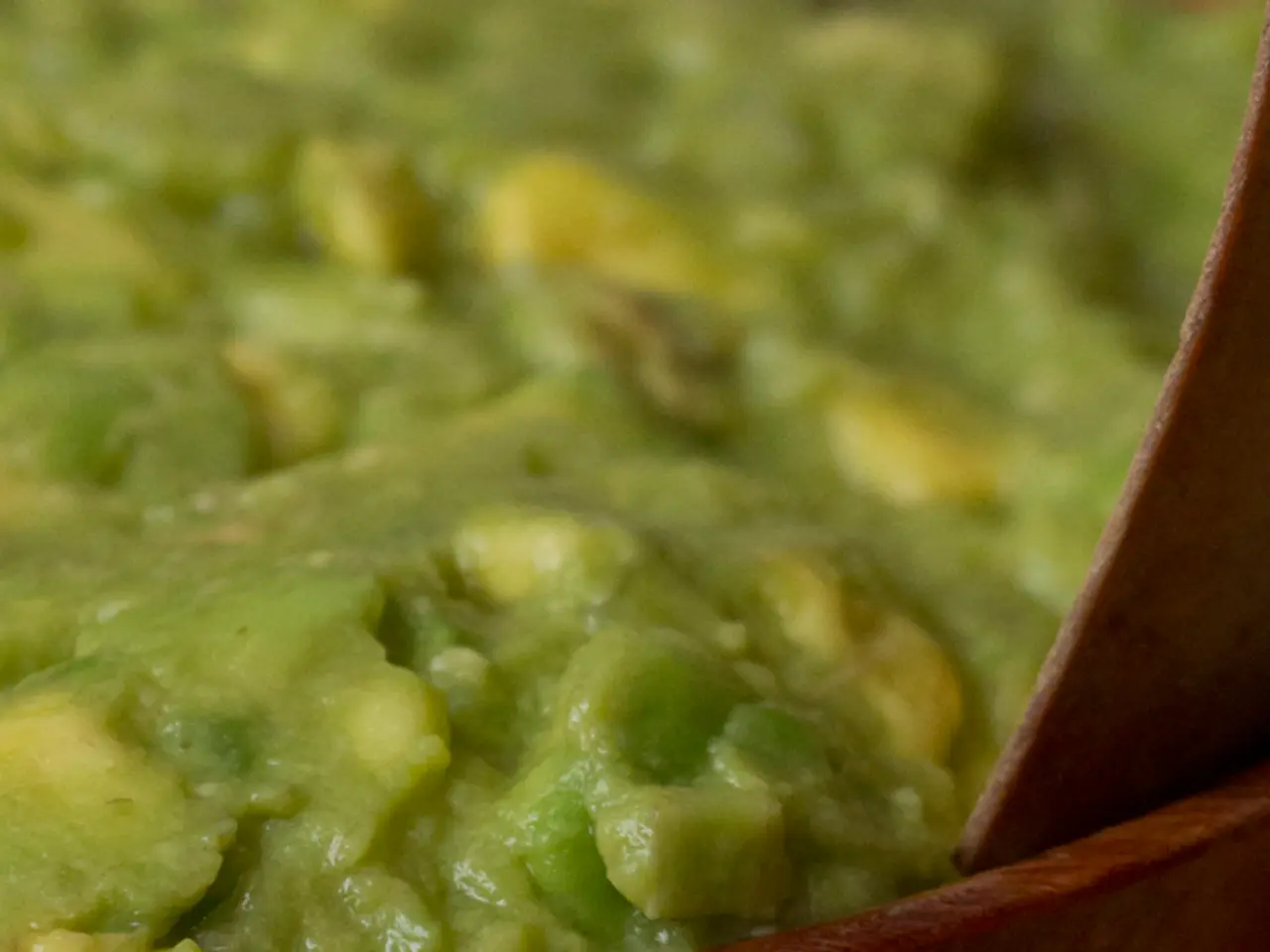Common Mistakes in Food Storage: Discover 13 Items You May Not Be Handling Correctly
Maintaining Freshness: A Guide to Storing Food for Longer Shelf Life
In the pursuit of reducing waste and enjoying food at its best, understanding the right storage practices for various foods is essential. By controlling temperature, humidity, container choice, organization, and preparation techniques, we can ensure freshness, flavor, and a longer shelf life for our groceries.
Temperature Control
Refrigerators should be kept at or below 4°C (40°F) to slow bacterial growth and maintain quality. Freezers should ideally be at -18°C (0°F). Avoid the "danger zone" between 4°C and 140°F, where bacteria multiply rapidly. Cool, dry storage areas between 10°C and 21°C are ideal for dry goods to inhibit pests.
Humidity Management
Refrigerator crisper drawers should be used with intent. One set should be kept at high humidity for moisture-loving vegetables (leafy greens, herbs, carrots) while the other should be set lower for fruits like apples and grapes to keep produce fresh longer. Maintaining low humidity in dry food storage prevents pest infestations and spoilage.
Proper Containers
Store foods in airtight containers made of glass, BPA-free plastic, or metal to prevent moisture, contamination, and pests. Vacuum sealing can extend the life of meats, cheeses, produce, and prepared meals by reducing air exposure, which helps maintain flavor and reduce waste.
Organizational Strategies
Use a first-in, first-out rotation by labeling items with purchase or preparation dates to ensure older foods are used before newer ones, reducing waste. Avoid overfilling storage to maintain airflow, especially in fridge drawers, to prevent excess moisture and spoilage.
Pre-freezing Treatments
For frozen produce, blanch vegetables or treat fruits with ascorbic acid before freezing to deactivate enzymes that cause nutrient, color, and flavor loss. Pack frozen foods in airtight wrapping to prevent rancid flavors from oxidation.
Placement in Refrigerator
Store raw meats on the bottom shelf in separate containers to avoid cross-contamination with other foods.
Avoid Heat and Sunlight Exposure
Keep stored food away from heat sources and direct sunlight to help maintain stable temperatures and extend freshness.
Specific Food Storage Tips
- Honey can be stored safely at room temperature in a tightly sealed container.
- Proper storage slows down sprouting and prevents garlic cloves from becoming soft or shriveled.
- Honey is a natural preservative and does not require refrigeration to keep it fresh.
- Coffee beans should be kept in an airtight container in a cool, dark place outside of the fridge to maintain flavor and freshness.
- When stored in cold conditions, the starches in potatoes convert into sugars, which alters their flavor and causes them to darken when cooked.
- Storing nuts at room temperature for a long time causes them to lose freshness and develop off-flavors.
- Avocados should be kept at room temperature until they soften and yield slightly to gentle pressure.
- Storing apples separately from other fruits and vegetables helps prevent the spread of ethylene gas and reduces premature spoilage.
- Potatoes should be stored in a cool, dark, and well-ventilated area, such as a pantry or cellar.
- Tomatoes should be stored at room temperature, away from direct sunlight, to maintain their juiciness and vibrant flavor.
- Cold temperatures cause the cell walls inside tomatoes to break down, resulting in a grainy or mealy texture.
- To keep apples crisp and fresh for a longer time, it is best to store them in the refrigerator's crisper drawer.
- Bananas should be stored at room temperature until they turn yellow and soften.
- Bread should be kept in a bread box or wrapped in a paper bag at room temperature to maintain moisture balance and softness.
- Garlic is best stored in a cool, dry, and dark place with good air circulation.
- Frequent temperature changes from moving coffee beans in and out of cold storage cause condensation, which degrades quality rapidly.
- To keep nuts fresh, they should be stored in airtight containers and placed in the refrigerator or freezer.
- Once ripe, placing avocados in the refrigerator helps slow further ripening and extends their usability.
- Some herbs, like rosemary or thyme, may also do well when wrapped in a damp paper towel and stored in a container in the fridge.
- Onions need to be kept in a dry, cool place with good ventilation, such as a mesh bag or a basket, to remain firm and dry for a longer period.
- The cold also suppresses the production of compounds responsible for tomatoes' characteristic aroma and taste.
- Cheese should be wrapped first in wax paper or parchment paper, which allows it to breathe while protecting it from drying out.
In the realm of food-and-drink and lifestyle, understanding proper storage techniques can extend the shelf life of various foods, contributing to a more sustainable and enjoyable cooking experience. By follows the temperature control guidelines, the shelf life of groceries can be maximized, with refrigerators kept at safe temperatures to slow bacterial growth and freezers set to prevent freezer burn. Additionally, humidity management, smart container choices, and organizational strategies can further ensure food freshness, flavor, and longevity, particularly in home-and-garden settings.




